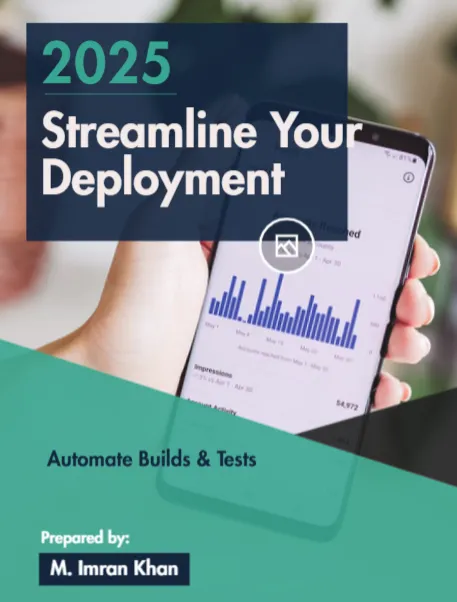Manual Deploys & No Automation? — It’s Time to Level Up
Imagine waking up one morning, coffee in hand, and realizing that the deployments you've been painstakingly managing manually come with a hefty price tag. That’s right—time and costly mistakes could easily be avoided if you embraced the magic of automation. For software developers and cloud engineers, the difference between manual deploys and automated ones can feel monumental. Let’s dive into why automating your builds and tests not only saves you time but also helps you dodge those pesky errors that can pop up like an unwelcome guest at a party
Let’s face it: manual deploys can be a significant drag. Picture yourself slaving over code, running tests, and then, when it’s finally go-time, crossing your fingers and hoping you didn’t miss a step. You might be thinking, “How could I ever forget?” But the truth is, we're human. We all make mistakes, and those mistakes can lead to deployment disasters that could have been easily avoided. That’s where CI/CD for Java developers comes into play
CI/CD, or Continuous Integration and Continuous Deployment, streamlines the entire process. You create a Java CI/CD pipeline that automates everything from building your project to running tests. This means you can focus on what truly matters—writing great code. With tools like GitHub Actions for Java, you can create a simple CI/CD pipeline that automates Java builds, reducing the manual labor that leads to errors.
I remember a colleague who once pushed a new feature to production, only to watch in horror as a critical function broke. All because he overlooked a minor test. A couple of hours later, after frantic debugging, he learned the hard way about the importance of build and test automation. His lesson became a team-wide mantra: “Automate to liberate!” By setting up a robust deployment process, we not only avoided mistakes but also built trust with our users.
For those just stepping into the world of DevOps, you might feel overwhelmed by the terminology and processes. But fear not! A beginner DevOps guide can help demystify the process. Start small. Implement GitHub workflow automation to automate your deployment processes. This can be as simple as setting up triggers for your Java software release process. When you push code to the repository, GitHub Actions can handle the rest, ensuring quality and consistency.
As for deployment mistakes to avoid, they often stem from the lack of automation. Relying on manual checks, inconsistent environments, and absent test coverage can lead to chaos. In contrast, a well-oiled CI/CD machine ensures that every line of code is tested and validated before it ever sees the light of day.
Let’s not forget about best practices. Java backend deployment becomes a breeze when you embrace Java deployment automation. As you get the hang of it, you can explore advanced topics, like building a continuous deployment tutorial that helps elevate your team’s workflow.
So, if you find yourself stuck in the manual vs automated deploys quagmire, take a leap into automation. It’s not just about saving time; it’s about creating an environment where your code can thrive, free from the burdens of human error. By automating your builds and tests, you’ll not only enhance your development process but also bring peace of mind to your team—and isn’t that what we all want at the end of the day? Embrace the future of deployment and watch your productivity soar!
.
FREE SPECIAL REPORT
FREE SPECIAL REPORT: Limited Time Access
In this exclusive report, you’ll discover:
👉 Why manual deployments are a ticking time bomb for your app — and how one forgotten config or skipped test can break production at the worst time.
👉 The “CI/CD Automation Cheatsheet” — a beginner-friendly blueprint to automate your builds, tests, and deployments with GitHub Actions or GitLab CI.
👉 Real-world Java & Spring Boot workflows that auto-test, build, and ship your code — without touching the terminal every time.
👉 The top DevOps tools I personally use to automate Java apps (GitHub Actions, Render, Fly.io, and Docker) — explained step-by-step for non-DevOps devs.
👉 A 5-step CI/CD pipeline you can copy right now — push → test → build → deploy → monitor.
👉 Bonus: A checklist of manual deployment mistakes developers make — and how automation saves you hours, headaches, and hotfix disasters.
🛠️ Build smarter. Deploy faster. Sleep better. 💥 Stop shipping code with your fingers crossed — download now and automate the stress away.
